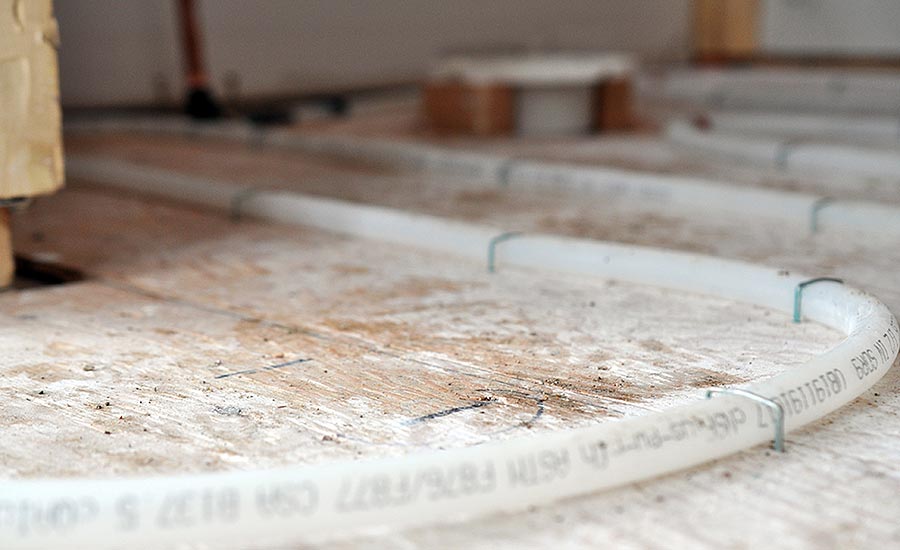

Common canister-type housings are available at any hardware store and a 20 micron filter will effectively remove silt and other particles from the home’s incoming water.Īnd while we’re on the subject of water, it’s important to remember that all plumbing systems, whether for domestic hot and cold water or hydronic heating, are subject to various environmental factors. Also remember that if the thermostat in the zone is calling for heat at the same time you’re using hot water, then the circulator pump will still be pumping hot water through the loops and the net result will be warm water entering the tubing instead of cold.īy the way, one of the easiest and least expensive ways to protect components in open systems, to say nothing of the home’s plumbing fixtures, is through the use of a whole house filter. And due to the large thermal mass in the floor, the small amount of cold make-up water entering the tubing has no chance of cooling down the floor….unless of course you were to take a four hour shower. Keep in mind that any hot water displaced by the cold make-up water eventually works it’s way to the water heater, so there’s no net energy loss. This assures that fresh water is always flowing through the system, even in the summer. So, when you use hot water, cold water enters the water heater via the floor. Without an open hot water valve, only the circulator pump supplying the radiant tubing can force water from the water heater into the tubing, and back, when your zone calls for heat. In other words, cold water cannot enter the system unless it has somewhere to flow….an open hot water valve in the house somewhere. If no hot water valves are open in your domestic system, the radiant system is essentially “closed”. The only cold water that can enter the tubing will be the “make up” water to your water heater. Fresh water enters the tubing every time you use hot water.Īnd although it looks at first glance as if cold water will be cooling down your floor, in reality that won’t happen. We plumb the radiant system this way so that there’s never any chance of stagnant water entering your domestic system. You’ll notice that cold water from your domestic supply enters the water heater via the floor tubing. Why is cold water entering the radiant system from the domestic supply? Open System Water flow schematic with tank type water heaterĪnother example of a Multi zone Open System with Municipal tank Multi-zone open system with electric on demand unit and expansion tank for municipal water supply Regardless of which radiant heating system you choose, be it Open, Closed Or heat exchanger, or type of fuel source you require, Propane, Natural gas, Electric or Oil,…Radiant Floor company has you covered!!! We offer units that will heat both your Radiant (space heating) and domestic hot water. These highly efficient heaters are built with Radiant heating in mind.

As long as the water heater is sized appropriately and matches your heating and domestic needs, the need for a “separate” heating system is eliminated.ĮVERY heating unit that Radiant Floor company recommends and offers is “DESIGNED & RATED FOR SPACE HEATING”! These units are not your “typical” water heaters, so don’t let the compact size fool you! All of our heating units are manufactured to an industry standard of quality and reliability. This is a very efficient system because one heat source is doing all the work. The same water that ends up in your hot shower or dishwasher, for example, has passed through the floor first. The two systems are basically tied together. The open system uses one heat source, your domestic water heater, to provide both floor heating and domestic hot water. Multiple Heat Sources Tied Into An Open System.Adding a Closed Anti-Freeze Zone or Snow melt Zone to an Open System Manifold.Outdoor Wood Boilers With an Open System.Using an On-demand Water Heater for an Open System.“Radiant Ready” single zone Open System.Why is cold water entering the radiant system from the domestic supply?.


 0 kommentar(er)
0 kommentar(er)
